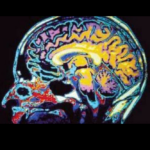Biosciences researchers have established a powerful new method that couples advanced infrared imaging techniques with statistical machine learning models to quickly and non-invasively determine with high accuracy whether an animal was exposed to radiation—even at extremely low doses almost three months post exposure.
ML Opens New Doors in TBI Research
Applying machine learning capabilities developed at Berkeley Lab to an extensive dataset created by the TRACK-TBI collaboration led to a six-fold improvement in the precision with which TBI patient outcomes can be predicted.
BCSB Confirms Design of Stimulus-responsive, Two-state Proteins
Researchers have leveraged machine learning to create proteins that toggle between two different shapes in response to biological triggers, overcoming a limiting challenge in computational protein design and broadening the potential functionality of designed proteins. Study co-author Banumathi Sankaran, a research scientist in the Molecular Biophysics and Bioimaging Division, used the Advanced Light Source (ALS) beamlines in the Berkeley Center for Structural Biology (BCSB) to validate results with X-ray crystallography data.
Machine Learning Helps Link Chemical Exposure and Obesity
Scientists at Berkeley Lab and their collaborators developed a machine learning technique to discover obesity-related mixed chemical exposure patterns associated with environmental health risk in the general U.S. population. To assess this, they used indicators like body mass index and waist circumference.
Was this page useful?







